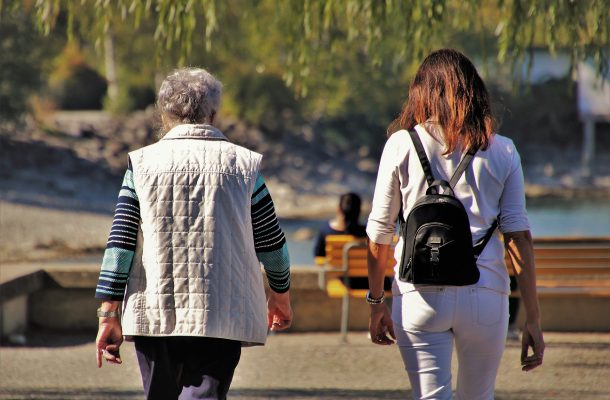Smart clothes could reduce falls for people with Parkinson’s disease

A team of researchers from Neuroscience Research Australia (NeuRA) and UNSW Sydney has received a grant from The Michael J. Fox Foundation and the Shake It Up Australia Foundation for Parkinson’s Research to test eHealth and smart garment technologies to prevent falls in people with Parkinson’s disease.
UNSW and NeuRA’s Dr Matthew Brodie and Associate Professor Kim Delbaere, who will lead the study, are working with industry partner Sensoria Health and aim to make StandingTall-PD the leading eHealth solution for maximising mobility and preventing falls in people with Parkinson’s disease.
“Existing dopamine therapies offer benefit in treating motor dysfunction in Parkinson’s but may not alleviate gait and balance challenges,” says Jamie L. Hamilton, PhD, Michael J. Fox Foundation (MJFF) Associate Director. “This project has the potential to become an affordable option to address gait and balance issues and improve overall quality of life for people with Parkinson’s.”
Falls are a common and often devastating event in the lives of people with Parkinson’s disease. They are frequently caused by gait impairments, postural instability and freezing-of-gait, a brief absence of forward momentum of the feet despite the intention to walk.
The neuro-rehabilitation program, known as StandingTall-PD, uses visual, audio and haptic sensory cues to help rewire the parts of the brain that control walking in people with Parkinson’s. The program aims to prevent freezing-of-gait and falls, and enhance participants’ independence.
Investment from Sensoria Health includes the development of the textile sensor infused Smart Socks with haptic feedback and core microelectronics for the study.
Participants will be given a mat with colour-coded stepping targets, a pair of Sensoria Smart Socks, an iPad and phone. The program, practised daily, will encourage participants to step on coloured stepping targets that match a series of colours displayed on their iPad. At the same time, they will listen to rhythmic auditory cues like music and a metronome beat that are synchronised with the vibrating Smart Socks.
The combination of visual, audio and sensory elements helps to form new connections in less affected parts of the brain, leading to improved walking ability.
The program enables participants to self-manage and monitor their own progress via an app on their phone. The app can also trigger stimuli during everyday activities, such as vibration in their Smart Socks, if they are in danger of experiencing freezing-of-gait, falls or if they show signs of shuffling feet.
Clinicians can also monitor participants’ progress remotely and adjust the program to provide ongoing and personalised continuity of care.
“People with Parkinson’s disease have substantial barriers to maintaining their independence. Our program has individually tailored tools to empower all people with Parkinson’s to manage their symptoms, increase capacity to remain independent and enjoy the highest possible quality of life,” says Dr Matthew Brodie.
Open Forum is a policy discussion website produced by Global Access Partners – Australia’s Institute for Active Policy. We welcome contributions and invite you to submit a blog to the editor and follow us on Twitter, Facebook, Linkedin and Mastadon.













